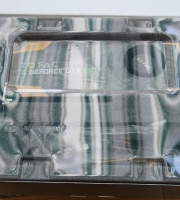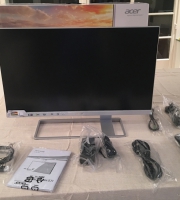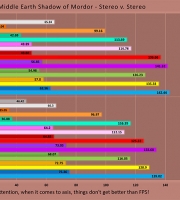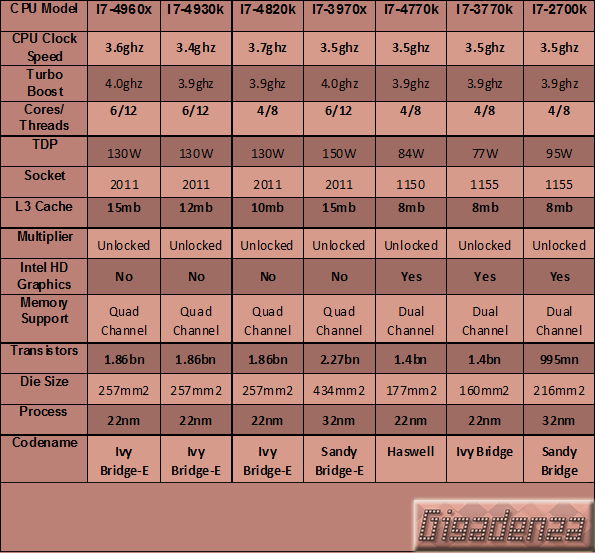


As Spring gave way to Summer in 2013, the cycle continued with a third major revision and once again, the mainstream user’s needs were met first. Another new chipset, another new socket and another new family of processors combined to form the “Haswell” generation.

At this point however, enthusiasts remain lagging in the Sandy Bridge era and the Ivy Bridge-E is intended as a direct upgrade for those with motherboards featuring the x79 chipset and a 2011 socket, though all but the very newest boards require a BIOS update prior to installation.
The three new CPUs incorporate the same ground breaking tri-gate 3D transistors as the standard Ivy Bridge chips, though in significantly greater quantity. The multiplier on each part is fully unlocked. The smaller 22mn die yields a welcome 20W reduction in power consumption and users with or considering a high end multi-GPU setup will continue to benefit from 40 PCI Express Lanes. Many were expecting at least one 8 core chip in the Ivy-E family but Intel has chosen to remain with six for the top two models and 4 for their “budget” sibling.
Whilst positives can be drawn from these processors being compatible with a chipset approaching its second birthday, the lack of any official refresh – such as the mainstream market received with the z68 and z77 – has meant that what at first were broadly considered annoying but minor shortcomings, might have developed into serious hindrances. Only two native SATA 6G ports, no native USB 3.0, no thunderbolt, no on chip graphics and hence, no quicksync, a very useful feature for accelerated video encoding.
Reception was less than stellar, as the following reviews bear out:
Maximum PC
AnandTech
Extremetech
HardOCP
HardwareCanucks
Tom’s Hardware Guide
One might well conclude that Intel’s persistent tardiness in fulfilling the dreams of loyal enthusiasts is now beginning to tarnish its tradition of catering to each market so precisely.
In fairness to Intel, their naming convention has remained consistent. But delaying the release of the Ivybridge-E, ostesibly to coincide with the launch of its 8 and 12 core Xeon cousins, has resulted in a confusing overlap of old and new technology for the enthusiast and mainstream and markets.
Had the Ivybridge-E made its debut at the six months earlier, the modest performance increase it offers might at least have been more aligned with expectation and greeted with less cynicism.
Without wishing to conclude on another negative, it’s impossible to ignore a deliberate and extremely ugly aberration by Intel. Having officially announced its intention to withdraw from the motherboard market at the beginning of 2013, the company also terminated all applicable technical support, software and BIOS updates with immediate effect, leaving many of its most loyal customers unable to take advantage of this, the ultimate generation of Ivy Bridge technology.
Shameless complacency in the face of limited competition would seem the only rational explanation. One can only hope that circumstances force some morals and clarity back into the equation before too long .